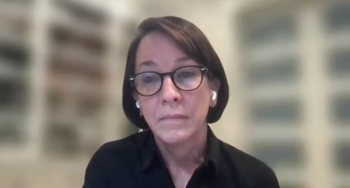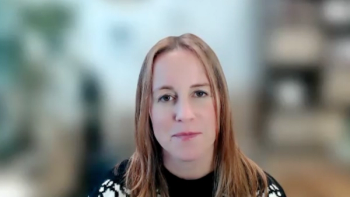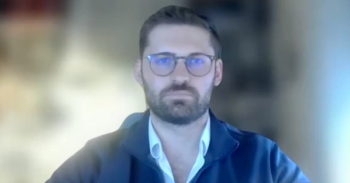
Oncology Pharmacists Are Bridging Gaps in Cancer Care: Jasmine Eugene, PharmD
Oncology specialist Jasmine Eugene, PharmD, explains how pharmacists practicing at the top of their license help close cancer care gaps amid provider shortages.
Captions are auto-generated.
Oncology pharmacists in community partnership with cancer centers and oncologists can help bridge the gap in cancer care amidst pharmacist and physician shortages panelists emphasized at the Institute for Value-Based Medicine (IVBM) held in New Orleans, Louisiana.
When pharmacists can practice at the top of their licenses, they can then serve as primary care providers for patients, and it is especially beneficial for patients who live in rural areas and have limited access to disease specialists or oncologists. Panelist at the IVBM, Jasmine Eugene, PharmD, a clinical pharmacy oncology specialist at Xavier University, explained why it’s so important for state and federal legislation to support pharmacists’ ability to expand their capabilities beyond their current limits. In an interview with The American Journal of Managed Care®, Eugene explained the various responsibilities pharmacists can alleviate from oncology physicians and the geographical and access barriers they reduce for patients through in-person and
“Remote oncology pharmacists, they're not only verifying orders, but they're also checking and making sure the patient's labs are appropriate and making sure that the treatment plan is built correctly and appropriately,” she said.
In Louisiana, pharmacists are able to titrate, modify, or discontinue therapy; order and interpret laboratory tests; and counsel patients on control of chronic conditions through the Well-Ahead Louisiana initiative.1 The initiative aims to increase the use of collaborative drug therapy management to better patient outcomes.
For oncology pharmacists like Eugene, this initiative not only allows them to direct patient cases without physician approval, but it also closes the provider shortage and access gap for oncology physicians and patients.
“Making sure that [patients] who are led by pharmacists and dosed by the pharmacists has helped, again, the providers because we're taking some of the load off of them,” Eugene explained. “It really gives us an extra layer of monitoring because [now], more than 1 person is looking at the patient.”
Telepharmacy and immersive patient care are significant tools and strategies to alleviate patient barriers to
“That's something we really do take into account, patient factors,” she said. “We take into account patients' wishes as well, and what would be easier. If there's something that we can give them orally, as opposed to intravenously, we'll definitely do that as well.”
In partnership with community oncologist pharmacists in Louisiana, like Eugene, they have the ability to bridge substantial gaps in access to e
“There is a push for pharmacists to gain that provider status so that we're not only, of course, dispensing and counseling medication, but we're prescribing that as well and making sure patients are getting the correct medications and the correct dose,” Eugene said.
References
1. Louisiana State policies prove problematic for pharmacist–physician collaboration. CDC. September 24, 2020. Accessed November 17, 2025.
Newsletter
Stay ahead of policy, cost, and value—subscribe to AJMC for expert insights at the intersection of clinical care and health economics.













































